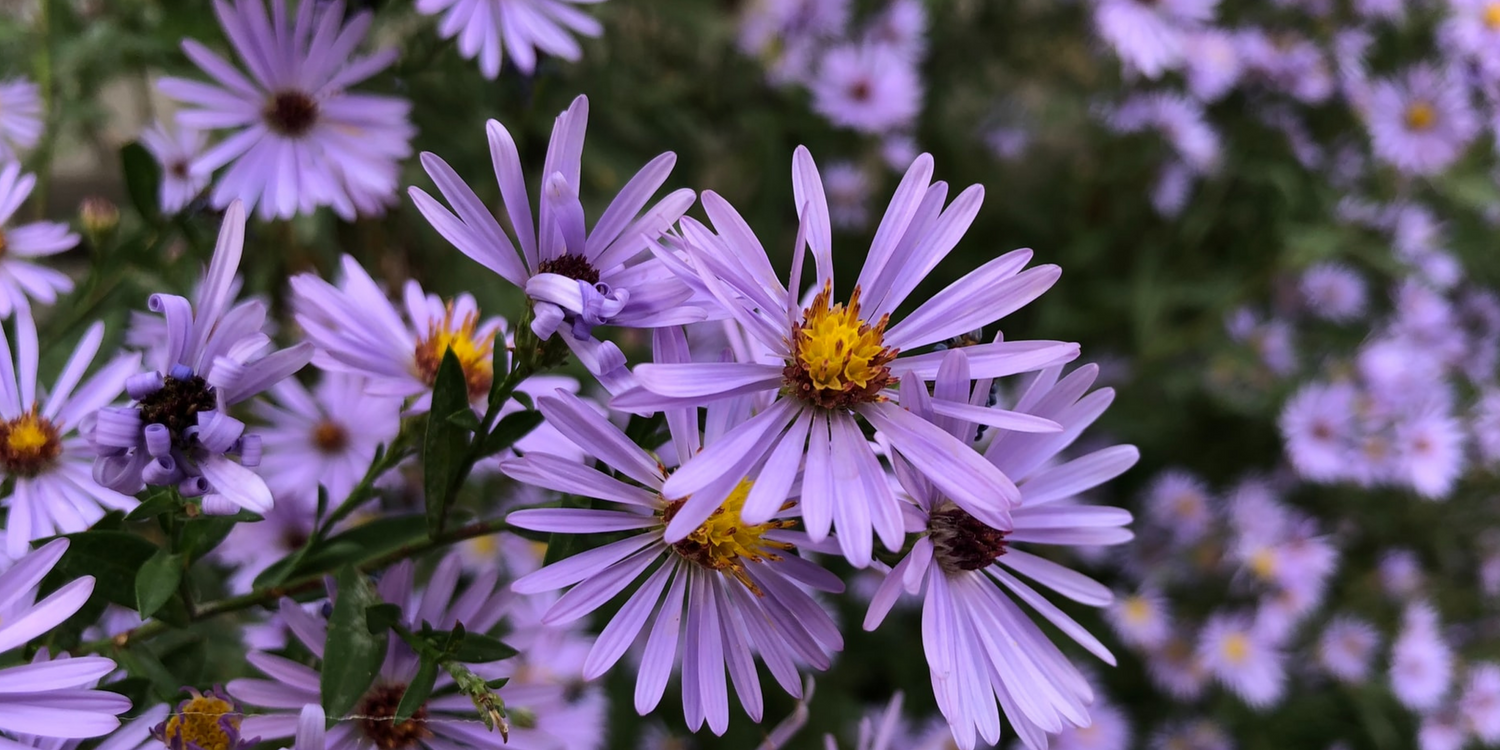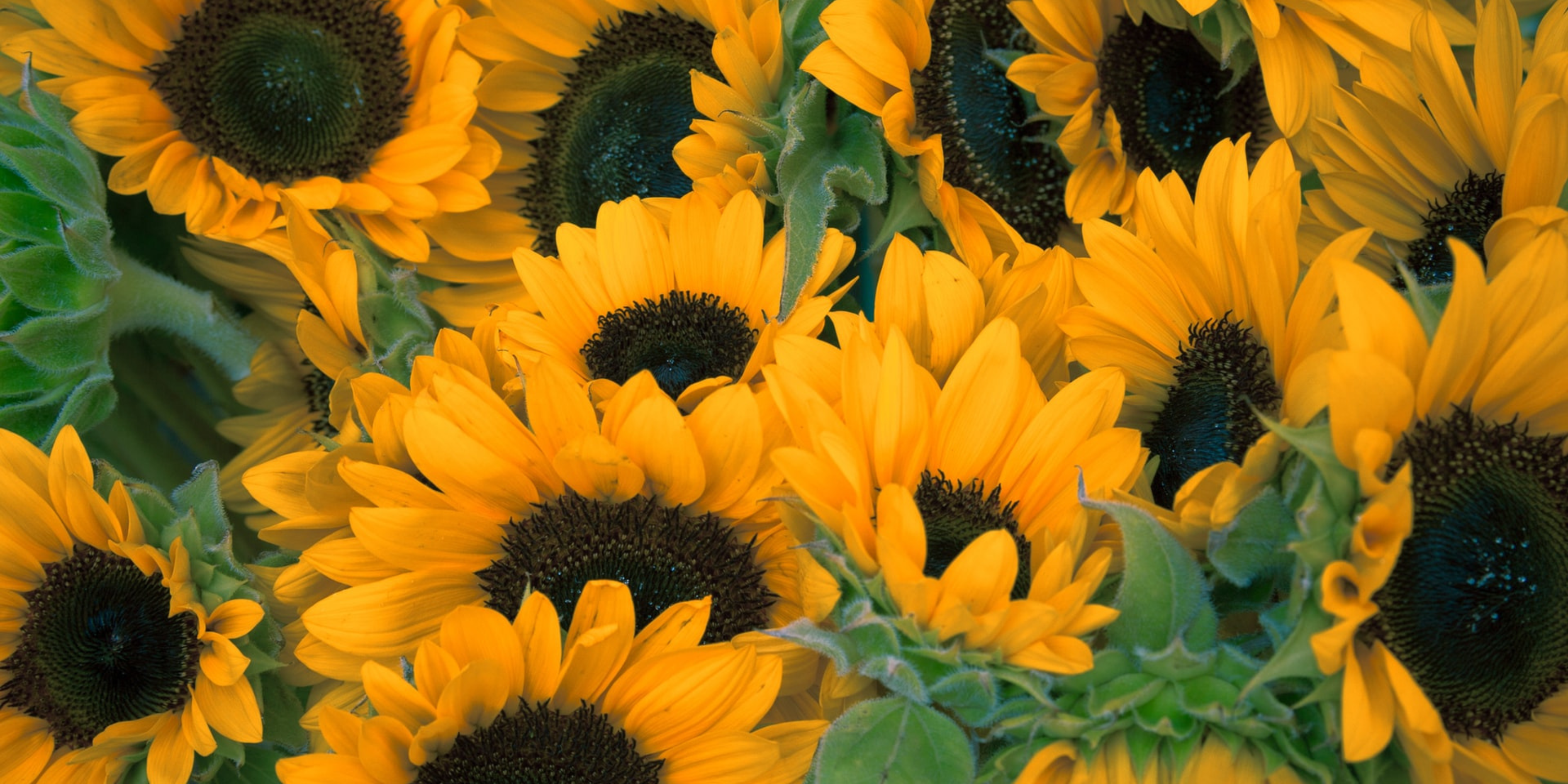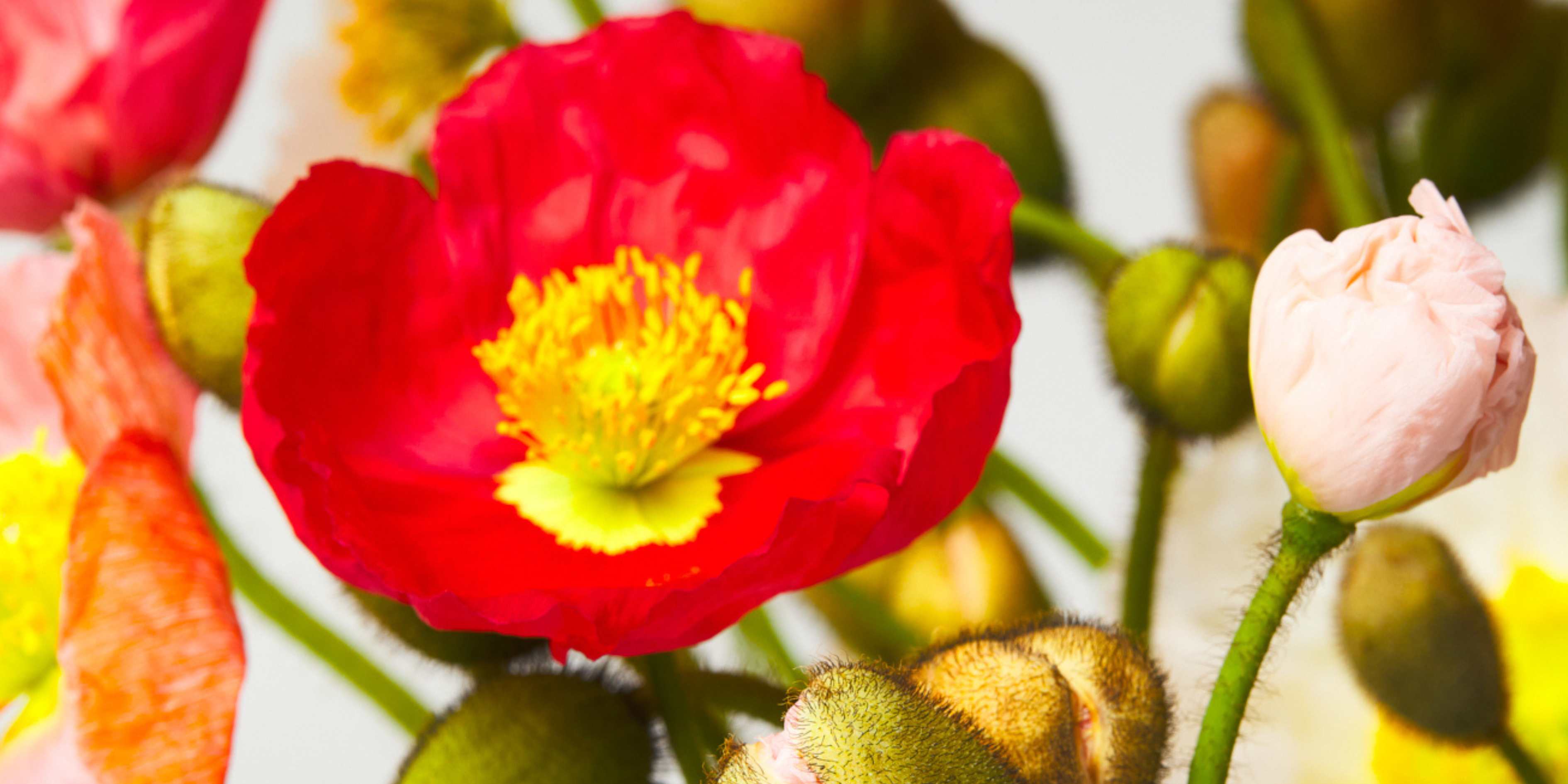If someone asked you, “What month do you think has the most births in Australia?”, what would you say? If you guessed August (as this author did), you’d be wrong.
According to the Australian Bureau of Statistics, September is the most popular month for births in Australia. September 17th had the highest number of births recorded in Australia over a 10-year period, and three September dates make up the top five most common birth dates overall!
Given how many September babies there seem to be, it’s definitely important for us to talk about what the September birth flower is. Read on to learn more about September birth flowers (yes, there’s more than one!) and their meanings.
Aster

Our first September birth flower is the humble aster. Once thought of as sacred but now more commonly (and unfairly) thought of as somewhat of a weed, there’s a lot more to this dainty, daisy-like bloom than meets the eye.
The history of the aster flower
The name “aster” comes from the Greek word asteri, meaning “star”. It’s definitely a fitting name for these little flowers, given their star-shaped heads. But the ties to Greece don’t end there!
Asters were once believed to be sacred to the Gods. The ancient Greeks and Romans would lay aster flowers upon altars dedicated to gods and goddesses.
In Greek mythology, the goddess Astraea is said to have wept because there weren’t enough stars in the sky. Where her tears fell to Earth, asters sprouted—like pretty little stars—from the ground.
In mediaeval times, it was believed that burning aster flowers would ward off evil spirits and serpents.
Asters have been used medicinally in China and elsewhere to treat a range of ailments, and have been the inspiration for many artists throughout history, including Claude Monet.
In the Hungarian Revolution of 1918, protesters donned aster flowers on their person, leading to the movement becoming known as The Aster Revolution.
That’s a lot of history for one tiny flower!
Are asters the same as daisies?

Asters are often mistaken for daisies. Though they may look similar, asters and daisies are actually two different types of flower. They do, however, belong to the same family: Asteraceae.
Sunflowers, chrysanthemums, dahlias, gerberas, marigolds, dandelions, zinnias and chamomile flowers all belong to the Asteraceae family, too! You can see their similarities just by looking at them.
What might surprise you, though, is that lettuce, globe artichokes and chicory (yes, like the kinds you put in salads) also belong to the Asteraceae family.
What do asters symbolise?
Historically, the aster flower has held a variety of meanings, from daintiness to patience to wisdom to faith.
The most common colour of aster is purple with a yellow centre, but they also come with pink and white petals. These different coloured petals carry different symbolic meanings.
White asters symbolise purity
In a similar vein to white roses and other white blooms, white asters symbolise purity, innocence and loyalty. They’re lovely as part of a wedding, sympathy or new baby bouquet.
Purple asters symbolise wisdom
Purple is said to be the colour of royalty, so it’s fitting that purple asters should represent royalty and wisdom. Purple asters are perfect for gifting to a person you hold in high esteem, or to someone undertaking studies or who’s graduating.
Red and pink asters symbolise devotion
The aster flower has been a symbol of devotion since antiquity. Today, pink and especially red asters are given as symbols of deep, undying love.
If your partner has a September birthday, a bouquet that features red or pink asters would be perfect for expressing your love for them. Red or pink asters are also perfect filler flowers for grander Valentine’s Day or anniversary bouquets.
When do asters bloom in Australia?
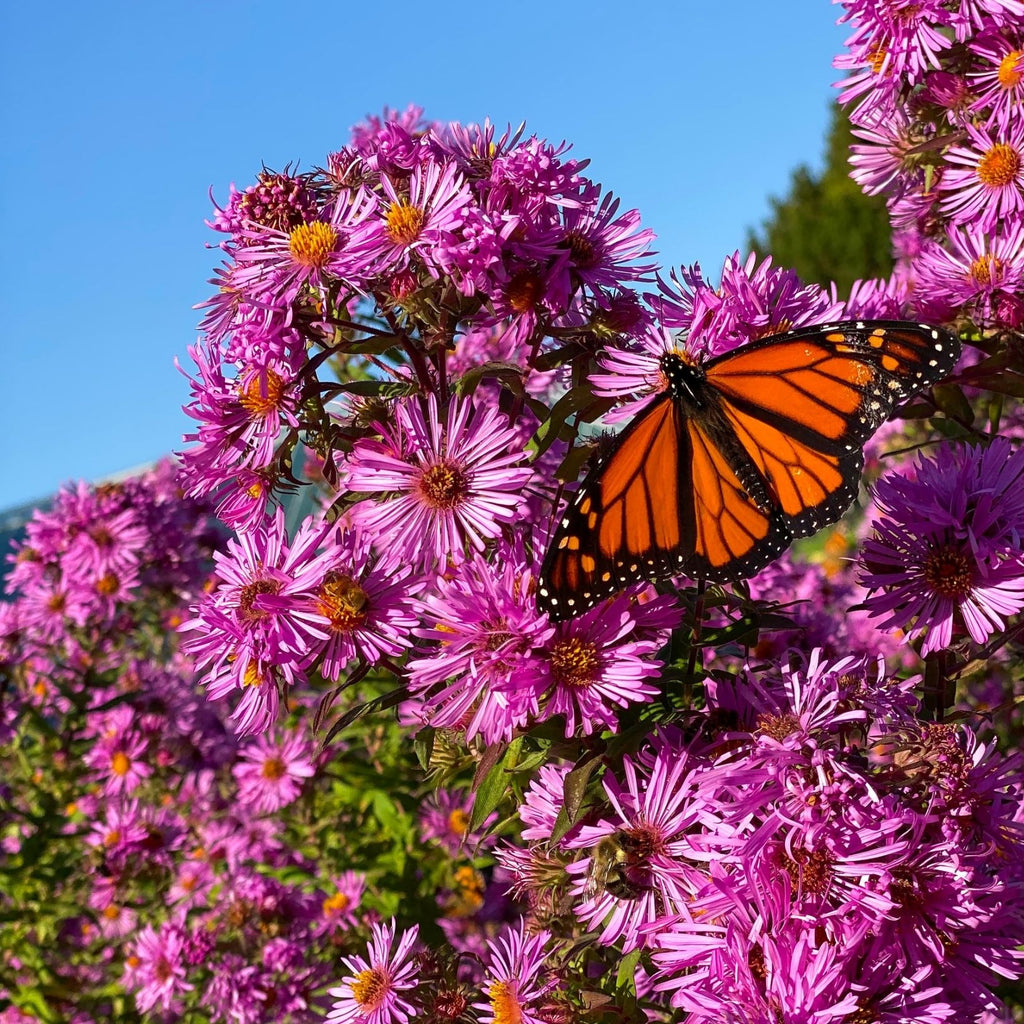
Asters are stars (pun intended) of the late summer to autumn garden. This is great news for pollinators like bees and butterflies, because when spring flowers lose their bloom asters are still around late in the season to provide nutrients.
In the northern hemisphere, September is exactly the time of year you’d expect to see asters in bloom. But in Australia, you’ll find asters flowering naturally from around February into April and May, typically around Easter time. For this reason, asters are also known as Easter daisies!
Of course, Easter time is a long time way away from September. Fortunately, greenhouse production means asters are virtually available all year round.
Asters last up to ten days in a vase once cut, so they make great, long-lasting additions to floral arrangements.
Morning Glory

The second September birth flower is morning glory. This lyrical name reflects the flower’s tendency to bloom early in the morning, and then close again by the end of the day.
Despite this, some varieties of morning glory actually prefer to flower at night! The moonflower, for example, blossoms in the evening and then closes again around midday the following day.
Morning glories make charming additions to home gardens, giving them a country cottage vibe. They grow in creeping vines, which sprawl across the ground, over trellises and along fences. They grow so well and so quickly that in fact, morning glory has become somewhat of an invasive weed in Australia.
Fun fact: The sweet potato is part of the morning glory family, Convolvulaceae.
The history of morning glory
The morning glory flower was important in ancient Mesoamerican cultures, like the Aztecs and the Mayans. Aztec priests are known to have used the hallucinogenic properties of the flower’s seeds to go on vision quests and to communicate with the gods.
In ancient China, the flower was also used for medicinal purposes.
What do morning glories symbolise?
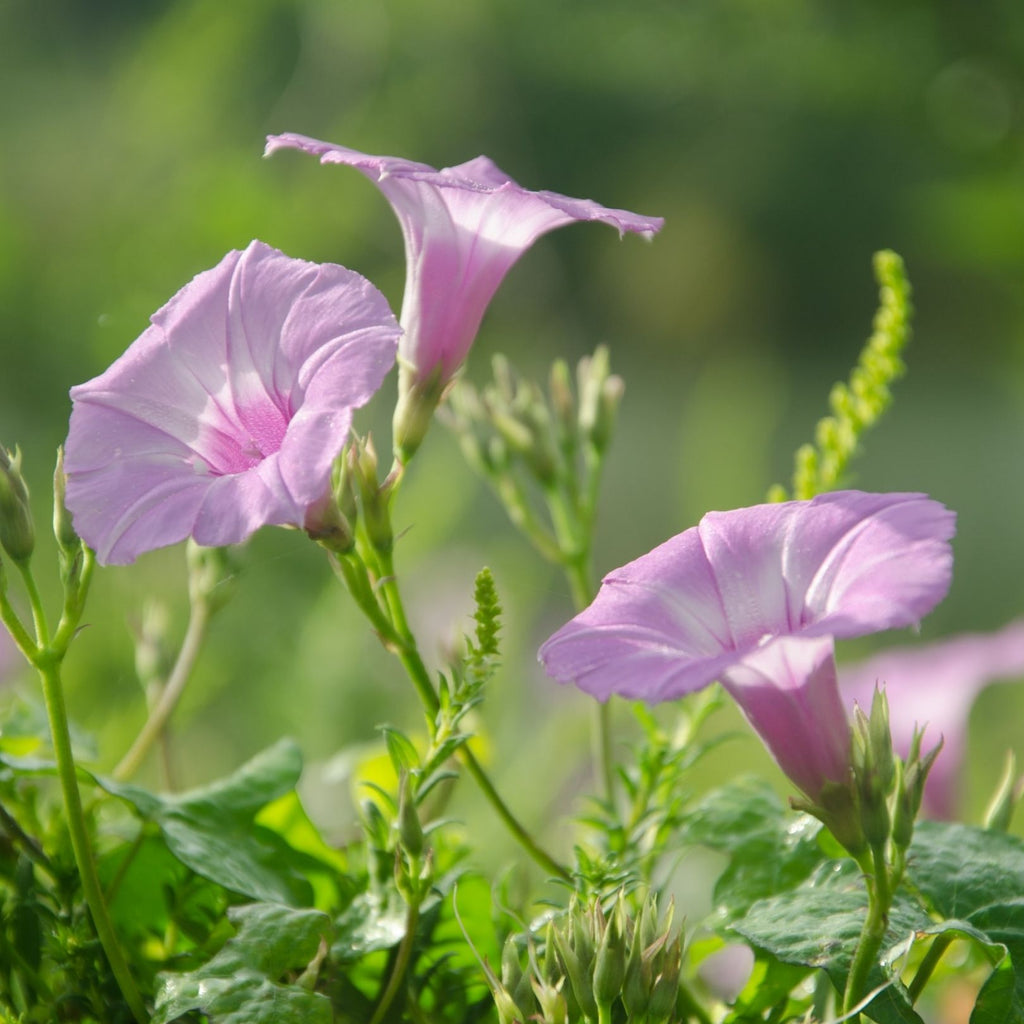
Morning glories have come to symbolise a number of different things throughout history.
Morning glory as a symbol of human resilience and mortality
Morning glory is a somewhat tragic flower, blooming and “dying” all in one day. It grows and thrives in harsh conditions, and always rises again in the morning.
For these reasons, morning glory has become a pretty poetic symbol of human resilience and the fleeting nature of this life.
The different states of the morning glory flower are also said to represent the various stages of human life. In morning bud they represent youth, in full bloom at daytime they represent adulthood and as they wilt in the evenings, they represent the later stages of life.
Morning glory as a symbol of love
In many cultures throughout history, the morning glory flower has had some association with love and affection. Sometimes, they represent an unyielding love that can overcome all challenges, and at other times they’ve been known to symbolise unrequited love.
Morning glory meanings by colour
As with all flowers, morning glories can have different symbolic meanings depending on their colour.
White morning glories are symbols of purity and innocence, as is the case with many white blooms.
Pink morning glories symbolise love and gratitude, while red morning glories symbolise deep and passionate love.
Like many purple flowers, purple morning glory symbolises royalty, while blue morning glory symbolises honesty, respect and trust.
When do morning glories bloom in Australia?

Morning glory thrives in full sun and warmth, flowering from late spring, throughout summer and into early autumn.
In the northern hemisphere, this would mean September would just fall within morning glory’s flowering season. In Australia, there's a chance you may find morning glory blooming in September, but only if the conditions are warm and sunny.
Morning glory is not often used in floristry. This is partly because morning glories don't last long once cut from the vine.
If you’re looking to give a September friend (or anyone, really) the gift of morning glory flowers, you may need to pick a few blooms from a garden or from the sand by the beach, but don’t be disappointed if they wilt within a day or so!
Forget-Me-Not

Lucky Septemberians get a bonus flower! In Britain, the forget-me-not is sometimes thought of as a September birth flower, alongside aster and morning glory. These pretty little blooms are predominantly blue, but they may also appear pink or white.
The forget-me-not has always held romantic symbolism, representing true love and faithfulness.
Unlike asters and morning glories, forget-me-nots bloom naturally from early spring to summer, so you are more likely to find these petite petals in bloom around September in Australia.
Australian native September birth flower: Geraldton Wax

And last, but certainly not least, we have Geraldton Wax. Though perhaps not thought of as a birth flower anywhere else in the world, Geraldton Wax is the Australian native birth flower of September.
Geraldton Wax, also called waxflower, is endemic to Western Australia and grows naturally from autumn to the end of spring.
The petals most commonly come in shades of white, pink and red. Once cut, wax will generally last 7 to 12 days in a vase, making them a great, long-lasting addition to floral arrangements.
What does Geraldton Wax symbolise?
Waxflowers are symbolic of good fortune, happiness and enduring love. For this reason, they often feature in wedding bouquets—good thing they bloom right around wedding season!
You really can’t go wrong giving someone a bouquet that features Geraldton wax, whether they’re born in September or not.
We love waxflowers here at Floraly, and you’ll find them in a number of our bouquets throughout the year. These may include our best-selling natives bunch or seasonal bouquets and posies like The Wanda, The Mel, The Remi and The Lilah.
***
With so many September birthdays, it’s only fitting that we be spoilt for choice in terms of September birth flowers!
Asters, morning glories, forget-me-nots and waxflowers are all beautiful and meaningful in their own right, but they take on extra special meaning when given to our September-born friends and family.
When you go the extra mile to gift a loved one a bouquet that features their birth flower, they’re guaranteed to love it all the more!
If you're looking to send birthday flowers in September, explore our range via the button below.

